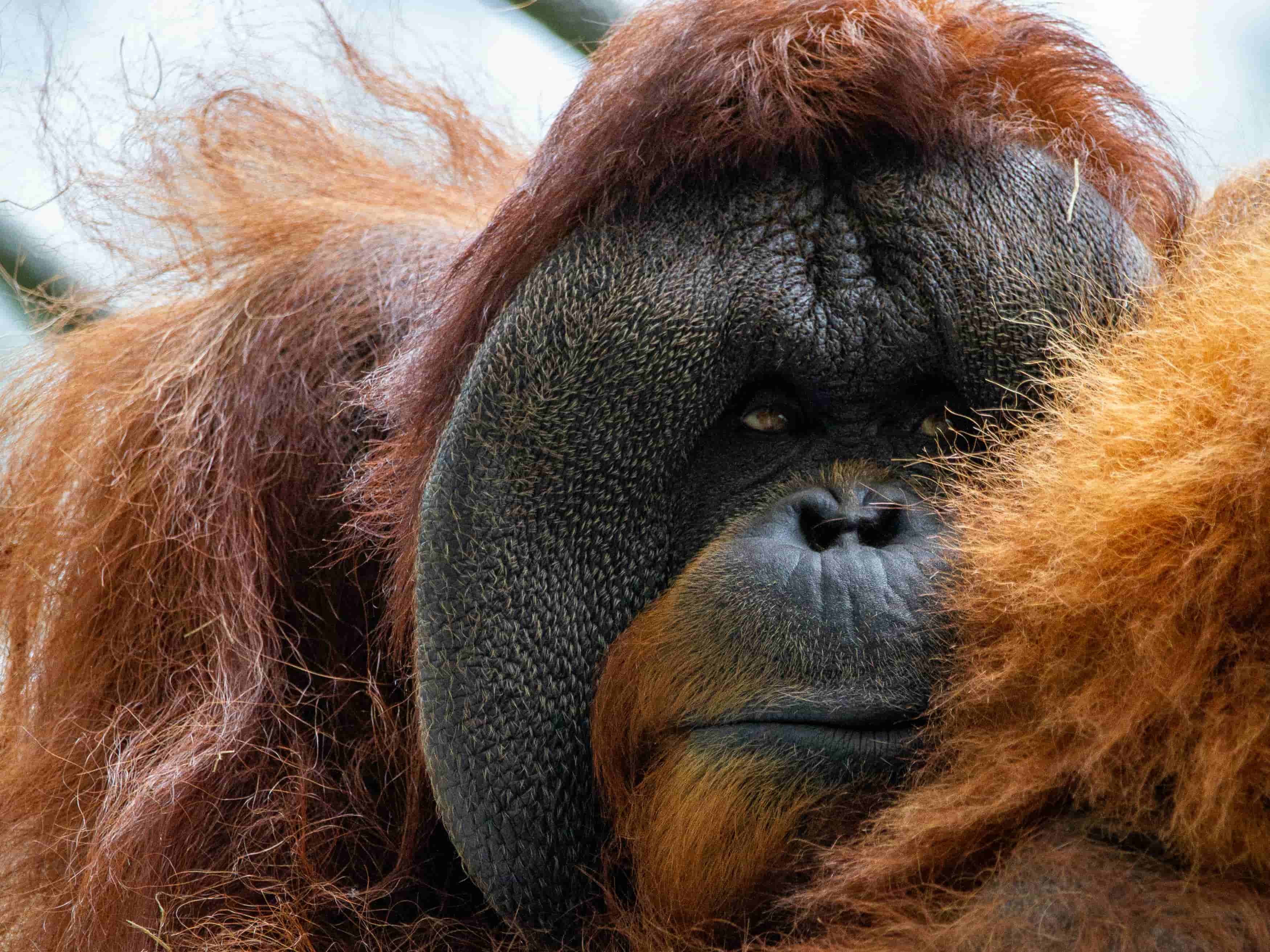Recently, scientists have uncovered how orangutans and chimpanzees use unique, laughter-like facial expressions during play to communicate with one another. These expressions change based on who they are playing with, revealing that apes can adjust their social signals depending on the age and sex of their play partners. This discovery provides a fascinating window into how our closest animal relatives use laughter and play to form bonds and navigate complex social dynamics, much like humans do.
What’s Behind an Ape’s Laugh?
Orangutans and chimpanzees, like humans, rely on facial expressions to communicate emotions and intentions, especially during play. Researchers observed over 600 “laugh faces” in young orangutans and chimpanzees, focusing on how they changed in different social situations. By analyzing specific muscle movements, called “Action Units” (AUs), which help to form expressions, scientists found distinct patterns in how apes produce these laugh faces. Common features included pulling the corners of the mouth and displaying upper and lower teeth, similar to human laughter.
However, unlike humans, apes don’t “laugh” with sound in the same way we do; instead, their laugh faces are primarily visual. This study showed that orangutans and chimpanzees modulate their laugh faces - showing more or less of their teeth, for instance - depending on whether their playmate is younger, older, male, or female. This variation suggests that the apes are aware of their play partner’s social status, strength, and even age, and they adjust their expressions accordingly to keep play interactions positive and non-threatening.
Age, Strength, and Friendly Play Signals
The study observed that orangutans often displayed more teeth when playing with younger or less dominant partners, such as females or younger apes, which may help to communicate a friendly, non-hostile intent. This is particularly common in play situations like gentle wrestling or mock chasing, where the risk of a misunderstanding is higher. By showing a more toothy, exaggerated laugh face, orangutans appear to be signaling, “This is just for fun!” to prevent rough play from turning into conflict.
Chimpanzees showed a different pattern. When they played with older or stronger partners, they often exposed both the upper and lower rows of their teeth - an expression that may indicate respect or submission. This facial display can serve as a signal that they recognize the social status of their partner, potentially reducing the risk of aggressive responses during play. In fact, both orangutans and chimpanzees were more likely to show intense laugh faces during highly active play, like chasing or wrestling, where the chance of accidental injury is higher.
Why Do Apes Laugh Differently With Different Partners?
The researchers suggest that these varied expressions help to maintain harmony and avoid conflict, especially during intense play sessions. Just as humans use smiles and laughter to show friendly intentions and de-escalate tensions, apes seem to have evolved similar behaviors. In play, facial expressions become a way to convey trust and ensure that the interaction remains safe and enjoyable. By displaying a laugh face that suits the situation, orangutans and chimpanzees communicate their intent, showing that they mean no harm.
Links to Human Laughter and Social Behavior
Humans are also known to adjust their laughter and smiles based on social context. People might smile or laugh differently depending on whether they’re with close friends, family, or strangers. This ability to change expressions to fit the social situation is thought to play a crucial role in human bonding and communication. The study’s findings suggest that this adaptability might have deep evolutionary roots shared with other great apes.
Scientists believe that these laughter-like behaviors may date back to a common ancestor of humans, orangutans, and chimpanzees, who lived roughly 10 to 16 million years ago. This discovery adds to a growing body of research showing that our social behaviors are deeply rooted in our evolutionary past and are not unique to humans.
Why This Matters
Understanding how apes communicate through laughter-like facial expressions offers new insights into the origins of human emotions and social behaviors. These findings help us see that even complex, non-verbal expressions have ancient origins, suggesting that laughter, smiles, and other friendly signals are shared tools in the social world of humans and apes. As scientists continue to explore the emotional lives of animals, they hope to deepen our understanding of the connections between human and animal emotions, shedding light on how behaviors that are essential for social bonding evolved across species.
This research not only highlights the similarities between humans and our closest relatives but also reminds us of the complexity and richness of ape social lives. Through laughter and playful expressions, orangutans and chimpanzees reveal a shared heritage of social intelligence and emotional depth that connects us all.


